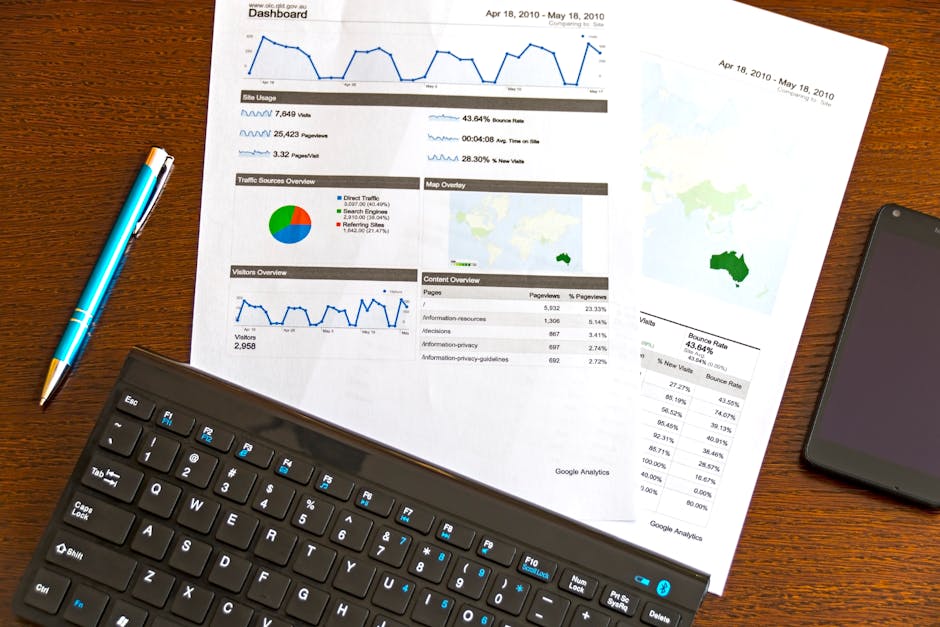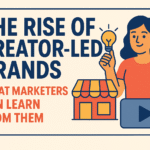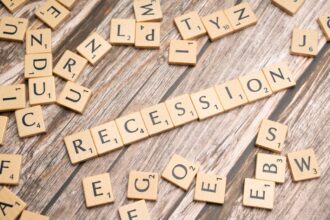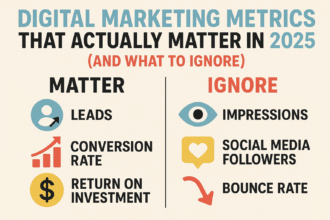Performance Marketing vs. Brand Marketing: Which Drives Faster Growth?
In today’s competitive business landscape, the debate between performance marketing and brand marketing has become more relevant than ever. Companies of all sizes—from startups to global enterprises—face the question: should they focus on immediate, measurable results through performance-driven campaigns, or invest in long-term brand equity that builds trust and recognition over time?
This article dives deep into both approaches, analyzing their benefits, drawbacks, strategies, and use cases. We will also explore real-world case studies and provide insights on how businesses in 2025 can balance these two powerful marketing strategies to drive faster and sustainable growth.
What is Performance Marketing?
Performance marketing is a results-driven approach where advertisers pay only when specific actions are completed. These actions may include clicks, leads, downloads, or purchases. It is data-centric and relies heavily on analytics and tracking to optimize campaigns in real-time.
Key Features of Performance Marketing
- Measurability: Every dollar spent can be tied to a specific metric.
- Pay-for-Result Model: Businesses pay only when a desired action occurs.
- Agility: Campaigns can be optimized quickly based on performance data.
- Short-Term ROI: Ideal for driving immediate conversions.
Popular Performance Marketing Channels
- Pay-Per-Click (PPC) advertising (Google Ads, Bing Ads)
- Social media advertising (Facebook, Instagram, TikTok)
- Affiliate marketing programs
- Retargeting campaigns
- Email marketing with conversion-based KPIs
What is Brand Marketing?
Brand marketing focuses on creating awareness, building trust, and establishing a long-term emotional connection with consumers. It is less about immediate conversions and more about creating a strong, recognizable identity that resonates with target audiences.
Key Features of Brand Marketing
- Long-Term Focus: Seeks to establish loyalty and recognition over years.
- Emotional Connection: Builds relationships beyond transactions.
- Broad Reach: Targets wide audiences to strengthen brand equity.
- Indirect ROI: Harder to measure but essential for sustainable growth.
Popular Brand Marketing Channels
- Television and radio advertising
- Billboards and print media
- Content marketing and storytelling
- Social media branding campaigns
- Sponsorships and partnerships
Performance Marketing vs. Brand Marketing: The Key Differences
| Aspect | Performance Marketing | Brand Marketing |
|---|---|---|
| Goal | Immediate sales and measurable actions | Long-term awareness and loyalty |
| Timeframe | Short-term | Long-term |
| Metrics | CTR, CPA, ROI, conversions | Brand recall, awareness, sentiment |
| Budget Allocation | Optimized for direct results | Focused on visibility and consistency |
| Risk | Low if well-tracked, high if poorly optimized | Requires sustained investment with delayed ROI |
Case Study 1: A Startup Using Performance Marketing
A 2024 SaaS startup in Europe launched with a limited budget and relied heavily on performance marketing through Google Ads and LinkedIn campaigns. Within 3 months, they achieved a 40% increase in sign-ups and generated $100,000 in recurring revenue. However, surveys showed that only 15% of users remembered the company’s name after unsubscribing, highlighting the weakness of neglecting brand equity.
Case Study 2: A Global Brand Investing in Brand Marketing
In contrast, Coca-Cola’s 2025 “Real Magic” campaign focused on brand marketing through storytelling, events, and influencer collaborations. The campaign didn’t drive immediate sales spikes but strengthened global brand recall by 22% (Nielsen report, 2025). The investment cemented Coca-Cola’s position in consumer minds, ensuring long-term loyalty.
Which Drives Faster Growth in 2025?
The answer depends on your business stage and objectives:
- Startups & Small Businesses: Performance marketing often delivers faster measurable growth by driving immediate leads and sales.
- Established Brands: Long-term brand marketing ensures sustainability, trust, and resilience against competition.
- Hybrid Strategy: Many successful companies blend both—using performance campaigns to fuel immediate sales while running brand campaigns to secure loyalty.
How to Balance Performance and Brand Marketing
1. Define Business Objectives
Clarify whether the immediate priority is sales or awareness. Set KPIs accordingly.
2. Allocate Budgets Strategically
Experts suggest the 60/40 rule (60% brand building, 40% performance marketing) for sustainable growth (IPA & Les Binet study, 2024).
3. Leverage Data & Storytelling
Combine the data-driven precision of performance marketing with the emotional appeal of brand marketing campaigns.
4. Experiment & Iterate
Test different strategies, measure results, and adjust campaigns continuously.
2025 Marketing Trends Impacting Both Approaches
- AI-Powered Personalization: AI tools optimize ad spend while tailoring brand messaging at scale.
- First-Party Data Reliance: With third-party cookies phased out, performance marketing relies more on direct customer data.
- Sustainability Branding: Consumers increasingly reward brands with authentic sustainability efforts.
- Omnichannel Integration: Growth comes from seamless experiences across performance and brand touchpoints.
Conclusion
When comparing performance marketing vs. brand marketing, neither approach is inherently superior. Performance marketing drives faster, short-term growth, while brand marketing secures long-term sustainability. Businesses in 2025 must embrace a hybrid strategy—balancing tactical, results-driven campaigns with consistent brand storytelling. This dual approach not only accelerates growth but ensures resilience in a rapidly changing market.
Call to Action: Companies should evaluate their current marketing mix, analyze their growth goals, and adjust budget allocation to ensure both immediate ROI and long-term brand strength.
Frequently Asked Questions (FAQ)
1. What is the main difference between performance marketing and brand marketing?
Performance marketing is focused on driving measurable, short-term actions such as clicks, leads, and sales. Brand marketing emphasizes building long-term awareness, recognition, and trust among consumers.
2. Which is better for startups: performance or brand marketing?
For startups with limited budgets, performance marketing is usually more effective in the short term. It delivers measurable growth and immediate conversions. However, over time, brand marketing becomes essential to build recognition and loyalty.
3. Can performance and brand marketing work together?
Yes, combining both strategies is often the most effective approach. Performance marketing drives immediate ROI, while brand marketing ensures long-term sustainability and customer loyalty.
4. How do I measure the success of brand marketing campaigns?
Brand marketing is measured using metrics like brand recall, awareness surveys, social sentiment analysis, and share of voice in the market. While harder to quantify than performance metrics, these indicators reveal long-term impact.
5. What is the future of marketing in 2025?
The future lies in integration: AI-driven personalization, sustainability branding, and omnichannel strategies that merge performance precision with brand storytelling. Companies that adapt to these trends will achieve both short-term growth and long-term resilience.








